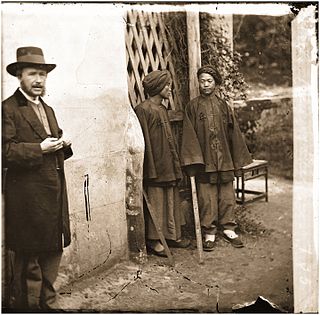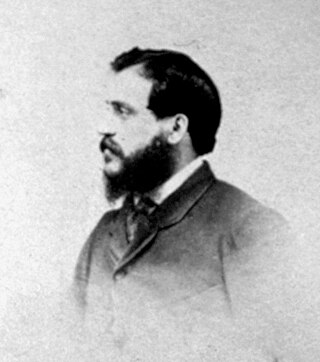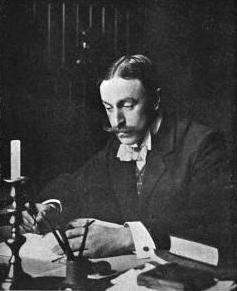Related Research Articles

Napoléon, Prince Imperial, also known as Louis-Napoléon, was the only child of Napoleon III, Emperor of the French, and Empress Eugénie. After his father was dethroned in 1870, he moved to England with his family. On his father's death in January 1873, he was proclaimed by the Bonapartist faction as Napoleon IV.

Thomas Patrick John Anson, 5th Earl of Lichfield was an English photographer from the Anson family. He inherited the Earldom of Lichfield in 1960 from his paternal grandfather. In his professional practice he was known as Patrick Lichfield.

Roger Fenton was a British photographer, noted as one of the first war photographers.

Naser al-Din Shah Qajar was the fourth Shah of Qajar Iran from 5 September 1848 to 1 May 1896 when he was assassinated. He was the son of Mohammad Shah Qajar and Malek Jahan Khanom and the third longest reigning monarch in Iranian history after Shapur II of the Sassanid dynasty and Tahmasp I of the Safavid dynasty. Nasser al-Din Shah had sovereign power for close to 51 years.

Jean-Baptiste Gustave Le Gray was a French painter, draughtsman, sculptor, print-maker, and photographer. He has been called "the most important French photographer of the nineteenth century" because of his technical innovations, his instruction of other noted photographers, and "the extraordinary imagination he brought to picture making." He was an important contributor to the development of the wax paper negative.

Sir William de Wiveleslie Abney was an English astronomer, chemist, and photographer.

Henry Peach Robinson was an English pictorialist photographer best known for his pioneering combination printing - joining multiple negatives or prints to form a single image; an early example of photomontage. He joined vigorously in contemporary debates in the photographic press and associations about the legitimacy of 'art photography' and in particular the combining of separate images into one.

War photography involves photographing armed conflict and its effects on people and places. Photographers who participate in this genre may find themselves placed in harm's way, and are sometimes killed trying to get their pictures out of the war arena.

Adolfo Farsari was an Italian photographer based in Yokohama, Japan. His studio, the last notable foreign-owned studio in Japan, was one of the country's largest and most prolific commercial photographic firms. Largely due to Farsari's exacting technical standards and his entrepreneurial abilities, it had a significant influence on the development of photography in Japan.

John Thomson FRGS was a pioneering Scottish photographer, geographer, and traveller. He was one of the first photographers to travel to the Far East, documenting the people, landscapes and artefacts of eastern cultures. Upon returning home, his work among the street people of London cemented his reputation, and is regarded as a classic instance of social documentary which laid the foundations for photojournalism. He went on to become a portrait photographer of High Society in Mayfair, gaining the Royal Warrant in 1881.

Felice Beato, also known as Felix Beato, was an Italian–British photographer. He was one of the first people to take photographs in East Asia and one of the first war photographers. He is noted for his genre works, portraits, and views and panoramas of the architecture and landscapes of Asia and the Mediterranean region. Beato's travels gave him the opportunity to create images of countries, people, and events that were unfamiliar and remote to most people in Europe and North America. His work provides images of such events like the Indian Rebellion of 1857 and the Second Opium War, and represents the first substantial body of photojournalism. He influenced other photographers, and his influence in Japan, where he taught and worked with numerous other photographers and artists, was particularly deep and lasting.

Frances Elizabeth Jocelyn, Viscountess Jocelyn, VA was a British courtier and amateur photographer. She was born as the youngest daughter of Peter Cowper, 5th Earl Cowper and his wife Emily Lamb. However, some have speculated that she and her brother William were fathered by Henry John Temple, 3rd Viscount Palmerston, whom Lady Cowper married in 1839, after Cowper's death. Before her marriage, Lady Frances served as one of the trainbearers at the coronation of Queen Victoria, and she also served as a bridesmaid at the wedding of the queen to Prince Albert in 1840.

Charles Nègre was a pioneering photographer, born in Grasse, France. He studied under the painters Paul Delaroche, Ingres and Drolling before establishing his own studio at 21 Quai Bourbon on the Île Saint-Louis, Paris.

Robert Howlett was a pioneering British photographer whose pictures are widely exhibited in major galleries. Howlett produced portraits of Crimean War heroes, genre scenes and landscapes. His photographs include the iconic picture of Isambard Kingdom Brunel which was part of a commission by the London-based weekly newspaper Illustrated Times to document the construction of the world's largest steamship, the SS Great Eastern.

Richard Keene was an early Derbyshire photographer. He was a founding member of The Derby Photographic Society in 1884 and the Photographic Convention of the United Kingdom in 1886 as well as being an early member of The Linked Ring.

Alfred Horsley Hinton was an English landscape photographer, best known for his work in the pictorialist movement in the 1890s and early 1900s. As an original member of the Linked Ring and editor of The Amateur Photographer, he was one of the movement's staunchest advocates. Hinton wrote nearly a dozen books on photographic technique, and his photographs were exhibited at expositions throughout Europe and North America.
Louis Napoléon Eugène Joseph Conneau was a French general who graduated from Saint Cyr military academy as part of the class of 1874–1876.

William Vick was an English photographer active in Ipswich, Suffolk from 1868 until the 1890s.

Richard Dykes Alexander was a businessman and philanthropist based in Ipswich, Suffolk.

Photographs have been taken in the area now known as Canada since 1839, by both amateurs and professionals. In the 19th century, commercial photography focussed on portraiture. But professional photographers were also involved in political and anthropological projects: they were brought along on expeditions to Western Canada and were engaged to document Indigenous peoples in Canada by government agencies.
References
- ↑ Mayon-White, W. M. (1966). "From Out the More Distant Past: A Sixth of Holden's, 1865-66". The Ipswichian. XXVII (306).
- ↑ Pols, Robert. "William Cobb leaves Ipswich". Early Photographic Studios. Robert Pols. Archived from the original on 2021-05-16. Retrieved 10 September 2020.
- ↑ "William HEATHMAN". Photographers 1840 - 1940 Great Britain & Ireland. Retrieved 8 January 2023.
- ↑ "Portrait of Louis Napoleon (1856-1879) Prince Imperial, from the Royal Military Academy | Cobb, William | V&A Explore The Collections". Victoria and Albert Museum: Explore the Collections. V&A.
- ↑ Cobb, William (1880). "Ballooning from a Photographic Point of View". The British Journal of Photography. London : H. Greenwood. XXVII (1075): 593–4. Retrieved 8 January 2023.